How Long Does it Take for a Tattoo to Heal
28 April, 2022Tattoos technically start healing right away, but it takes about four months for your tattoo to fully heal. The outer layers of your skin will heal in about two to four weeks, while the deeper layers
where the ink sits will take about four months to fully heal.
That’s the short answer! There’s much more to the story if you want to understand the tattoo healing process and protect your tattooed skin. Mad Rabbit is going down the rabbit hole to give you a detailed timeline of what your healing process might look like.
Keep in mind that your tattoo is a wound, and everybody heals differently. Our word is valuable, but it’s not gospel! Talk to your tattoo artist or a doctor if you have any concerns about your healing process.
In the meantime, let’s walk through the tattoo healing process day by day and see what useful lessons we can uncover.
First Day
Freshly inked — congrats, friend! You sat through the jabbing, and now you’ve got what you came for. A fresh wound! Kidding…well kind of. You do have a fresh wound, and it will turn into an awesome tattoo, but you’ve got to treat it right!
Your artist hopefully covered up your fresh tattoo and gave you tattoo aftercare instructions that included how long you should wait before removing the covering or washing your tattoo for the first time.
You might see your tattoo oozing. This is the first part of the healing process. The wound is excreting excess ink and blood plasma. The blood plasma being trapped against the wound is going to help stimulate and speed up the healing. You may also feel some tenderness or soreness in the area as the tattooed skin works overtime to maintain homeostasis.
Thank your awesome body — it’s sending immune cells to your wound as reinforcements to help support the healing process! Take it easy, prioritize nutrition, and avoid any strenuous activity immediately after getting tattooed.
You need all your strength to ensure the skin heals well and to minimize the risk of infection. Give your immune system the fuel and support it needs, including hydration and other tattoo healing tools.
2nd and 3rd Days
Within 24 hours, the tattoo should stop oozing, and your skin should begin to produce some healthy scabbing. You’ll probably see your skin looking irritated and red — relax, that’s a normal response.
You might have been directed to wait until today to remove your bandage and gently clean your tattoo. Your new mantra: be gentle. This means avoiding tight clothing, minimizing sun exposure, and staying on track with the proper aftercare steps outlined by your artist.
A cautious approach is key when cleaning your tattoo twice daily. You don’t want to disturb the scabbing process when washing. This is where the gentle touch comes in. Just try to get the excess blood and ink off using a gentle antibacterial soap, lukewarm water, and clean hands. It’s okay if it looks a little less than ideal — your beautiful tattoo is in its cocoon!
Dry your tattoo off by patting it with a clean paper towel, and apply a thin layer of a fragrance-free gentle moisturizer on the wound and surrounding area. You’ll want to keep the area moisturized until it isn’t an open wound, and while you shouldn’t be reapplying the bandage from before, the right moisturizer can serve as a breathable barrier between your wound and the outside world, including the bacteria and irritants in it.
Don’t use lotion to moisturize until your wound is closed. You’ll want to use a breathable ointment specifically made for wound healing.
Mad Rabbit’s Tattoo Gel is made of lightweight ingredients like aloe vera and argan oil that soothe and heal your tattoo without congesting your pores (the way other petroleum-based products might).
End of the First Week
Cleanse, moisturize with that breathable ointment-like soothing gel, and repeat. This is the simple yet effective cycle of aftercare that you should follow throughout your first week with new ink. Continue to wear loose clothing, avoid the sun, and stay out of the water, apart from short showering and cleaning sessions.
By the end of the first week, you should still see a bit of light, soft scabbing. No touching! The scabbing is good! Don’t mess up your art by picking. You just keep your tattoo clean, moisturized, and covered for now. It’s going to continue to scab as it heals, and that is A-okay.
At this point, you should see a reduction in swelling and tenderness, especially if you’ve been keeping up with your aftercare tasks. Most of the redness should be gone at this point, but you should also keep an eye out for any sign of infection.
Skin that seems raised, irritated, or hot to the touch could cause concern. Contact your artist or a dermatologist if these signs persist after the end of the first week.
Remember that larger tattoos with a wider variety of pigments will always take longer to heal, even if your aftercare routine is perfect. Practice patience and let your body do the work as you stay on track with your skincare and healthy lifestyle habits to ensure timely healing.
Also, take note that your new ink is going to look worse before it starts looking better. Those scabs might not be pretty, but they’re necessary to ensure your new skin emerges stronger and full of vibrant color. Accept that you won’t have your “picture-perfect” tattoo for a few more weeks, and that’s just part of the deal.
The Second Week
Those light, soft scabs will harden and become flaky as you enter the second week of the healing process. It might even look like your tattoo is peeling off.
If you didn’t get your tattoo done by a scratcher in someone’s living room, this shouldn’t be the case! You’re just seeing your skin and some excess ink coming off.
The occasional flake will dislodge when you’re showering or sleeping at night but don’t fret. As long as you aren’t intentionally pulling and picking at these scabs, they will fall out on their own when the time is right.
How should your tattooed skin feel at this point in the healing process? Your biggest issue at this point is probably “the itch.” You know that itching that happens when something is healing so good? It can feel like too much to bear, but this is simply a test of patience and discipline that every tattoo collector experiences.
Most importantly, resist the temptation to touch your skin however much you want to! Don’t scratch the itch! If you scratch, you are going to mess with the healing process, and you could damage your tattoo, not to mention the risk of infection.
So instead, use some of that Tattoo Soothing Gel we told you about. It’s going to help relieve that itchy feeling and calm your tattoo down, thanks to soothing aloe vera. The cooling sensations can soothe your urge to itch and keep you on track with proper aftercare.
The best thing you can do is keep the soothing gel on hand when itchiness strikes. This way, you always have a healthy way to deal with the sensations.
At this stage, the layer of skin underneath the tattoo is just about fully formed. The dead skin on top will flake away naturally, along with some of the tattoo ink that was embedded. By the end of the second week, you should see your open wound transition to a closed wound. The scarring will get smaller, and you’ll start to see what your healed tattoo will look like.
Keep your tattoo out of the sun for the first 14 days until you’re able to safely put sunscreen on it. By this point, you can resume most of your daily activities but continue to avoid prolonged sun exposure and stay out of the pool and bathtub. You’re rounding the corner on the tattoo healing process, and your peeling skin is a sign that everything is going to plan!
You can also start incorporating some light exercise at this point, as the top layer of skin is beginning to heal up and close. In fact, a bit of movement will improve blood and lymph circulation to support the tattoo healing process.
Consider walking or light calisthenics instead of heavy lifting or long endurance sessions. Just be sure to wash the area fully after you break a sweat and protect the tattooed area if you hit the gym.
The tattoo might still not look great, but you’re nearing the finish line, so stay disciplined as the healing time reaches its conclusion.
Third and Fourth Weeks
Your new tattoo is looking better at this point, but it’s still healing beneath the surface! The good news is that the area should be less wound-y, more tattoo-y. You’ll still have some flaky skin, and you’ll need to be diligent with moisturizing the area.
Typically by the fourth week, the outermost surface layers of the skin have healed. Your tattoo has gone from open wound to closed wound. This means you can transition from using a wound-safe moisturizer to a more general skin lotion, and you can start putting sunscreen on it.
Consider getting a nourishing lotion that’s good for not only your tattoos but your whole body. Our Daily Tattoo Lotion is fragrance-free and safe for all skin types. It’s made with shea butter, vitamins A & E, and sesame oil to provide non-greasy, long-lasting, lightweight hydration.
Pair that with our mineral-based tattoo sunscreen, and you’re ready to start showing that new tattoo to the world!
Both our Daily Lotion and Tattoo Sunscreen are formulated for daily use, so don’t be afraid to make it a regular part of your daily tattoo routine. The right aftercare can help nourish your tattoo both through the healing process and in the long term!
After the Fourth Week
So close, but not quite there yet! The wound has closed, but the deeper layers of the skin are still healing. What does it mean when we say closed wound? The outer layers have closed up and healed, so nothing can get into the wound. More importantly, you’ve reached a key benchmark in the healing process and can safely resume more strenuous physical tasks that you’ve been missing out on.
Nevertheless, the deeper layers of the skin, where the ink sits, are still healing. Those layers can take up to three or four months to heal.
This means you can expect to see more accurate color and shading four months after you get your tattoo. Provided you stay on track with your aftercare steps and embrace a balanced skincare routine, your ink will start to look better and better.
Keep on moisturizing and protecting your tattoo with lotion and sunscreen until it’s fully healed. You’ll want to keep using the sunscreen forever. Forever’s a long time, but you knew that when you got the tattoo, right?
By the end of the first month, your body has done most of the heavy lifting to heal the skin and facilitate a clean, freshly healed tattoo. However, your work is not over — it’s time to transition to a long-term care practice that will keep your ink looking good for the long run.
Thankfully, caring for healed ink is not nearly as laborious as healing a new tattoo. Just follow the principles of sun protection and use a hydrating daily lotion to keep your ink on point for years to come.
Pro Tips For Healing Your New Tattoo
Find a Reputable Artist
Always find an artist you can trust. We’re talking beyond style. Find a respectable artist that buys high-quality ink and sterilized needles and keeps their equipment functional, clean, and maintained.
Moisturizing a Fresh Tattoo
There is an age-old debate over whether or not you should let wounds heal dry or wet. The answer lies in the middle — as it usually does.
A bit of truth to each side. You want to keep a thin layer of a breathablemoisturizing agent over your wound. Too much or too thick, and the wound will suffocate, and it won’t heal properly.
None or too little moisturizer, and the wound will dry out and shrivel up.
Don’t even get us started on petroleum products — even a thin layer of a petroleum-based product will suffocate your tattoo. Just don’t. Pretty please.
Cleaning a Fresh Tattoo
Get a fragrance-free, antibacterial soap. Clean your hands. Run some warm water over the tattoo, and then put a bit of soap in your hands with some water and get a nice lather.
Gently rub that over the tattoo, then wash the soap away with water. If there’s a spot that’s difficult to get clean — just leave it for now and let it lift out of the wound in its own time.
You can safely shower at any stage of the tattoo healing process, but avoid submerging your skin in water completely. This means no baths, surfing, or cannonballs into the pool or ocean.
Try to limit your time in the shower and be efficient with your grooming habits. A little bit of soap and water goes a long way, and you don’t want to saturate the area with hydration beyond what’s necessary.
Finally, don’t wash too often. Twice a day and after any sweaty or dirty activity should be just right.
Covering Your Tattoo — No Bandages and No Sun
You’ll want to keep your tattoo covered with the wrap from the shop for as long as your artist recommends. After that, you’ll wash your tattoo for the first time, and you can start letting your tattoo breathe. If you’re going to be in a situation that could expose your tattoo to excess dirt, dust, or even friction, opt for breathable clothes that will keep it covered, but do not try to rebandage.
New tattoos should stay out of the sun for 14 days — this is where long-sleeves, hats, and full-length pants can help keep you covered.
After that first 14 days, you’ll still always want to protect your tattoo with sunscreen. We mentioned our mineral-based sunscreen earlier. It’s a 30 SPF formula made with Zinc Oxide to protect you from both UVA and UVB rays and paired with Vitamin C and carrot extract to protect you from environmental stressors and support healthy cell turnover.
Keeping It Young
Keep your tattoo looking forever young with our Tattoo Balm — it’ll help revitalize, replenish, and preserve your body art.
Made with clean ingredients, including shea butter, sweet almond oil, cocoa butter, beeswax, and calendula, it gives your ink the nourishing it needs to stay vibrant and bold. Plus, it comes in three scents: Vanilla & Coconut, Frankincense & Lavender, and Cucumber.
Looking young and staying fresh, what else could you ask for? Combine this with a hydratinglotion and the occasional exfoliation, and you have a winning recipe for long-term tattoo care.
The toughest part of getting tattooed is the first few weeks when you’ll need to be vigilant and make some minor sacrifices. But it will all be worth the effort when the area is fully healed and you have a beautiful new piece to show off!
—
For more helpful articles on tattoo how-to’s, explore the Mad Rabbit blog here.
Sources:
Wound Healing: A Cellular Perspective | Physiology Reviews
Anti-Inflammatory and Skin Barrier Repair Effects of Topical Application of Some Plant Oils | PMC
Try risk-free & save with the Essential Sets


Daily Defense Set


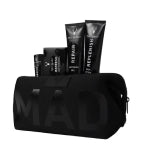

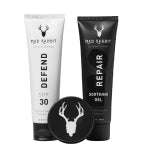
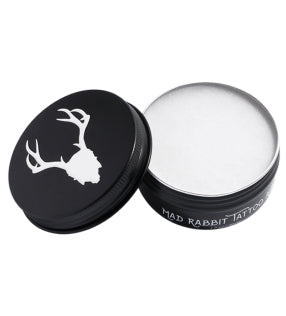
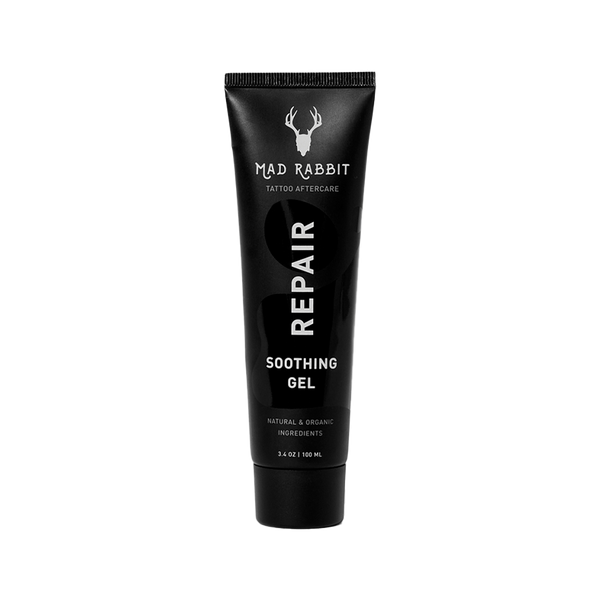
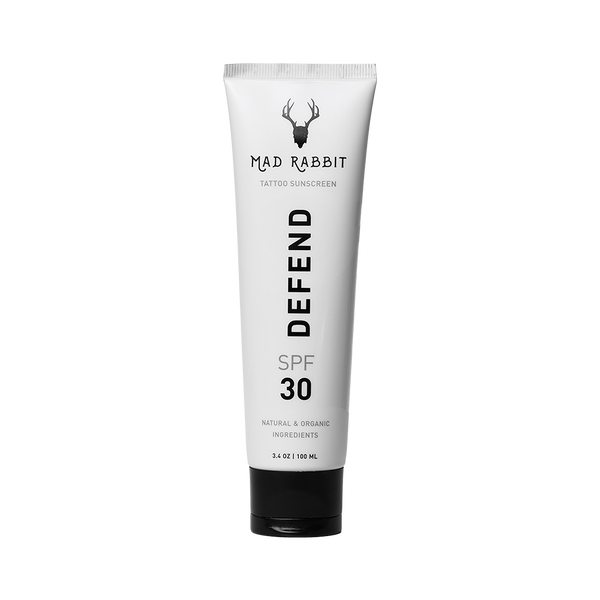
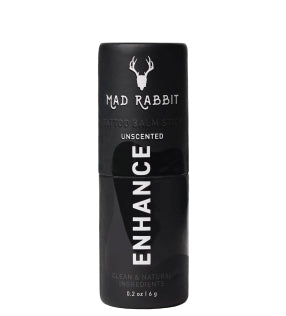
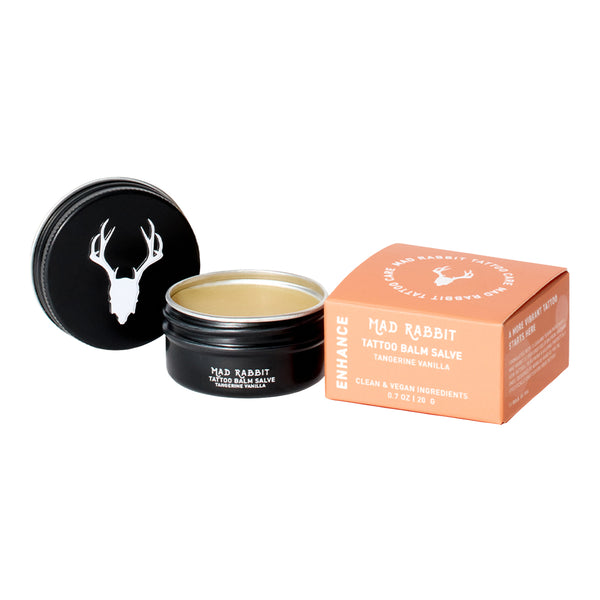
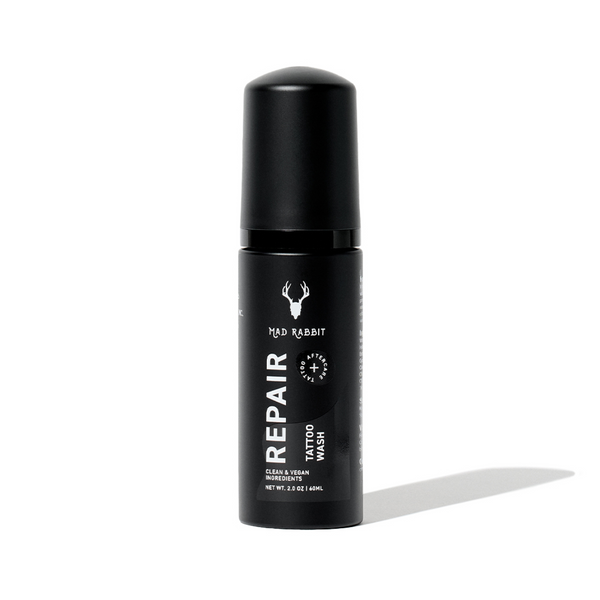
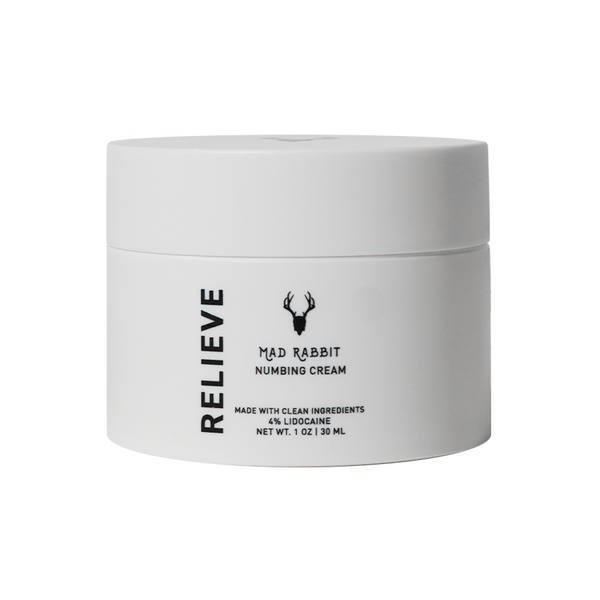
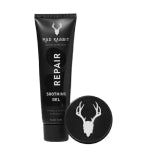
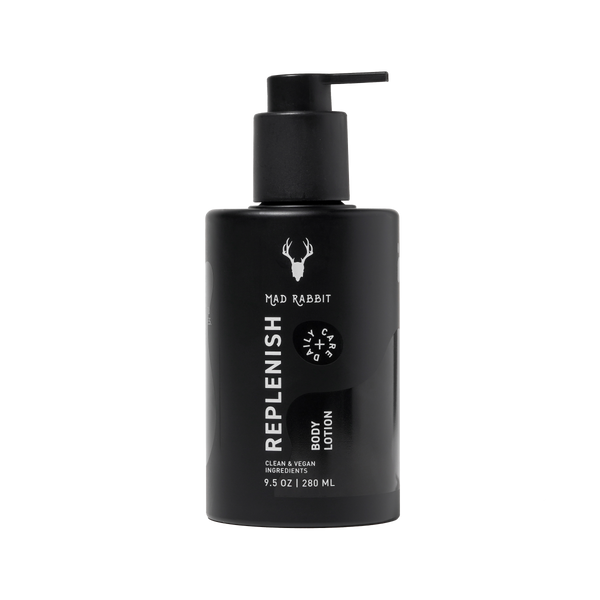
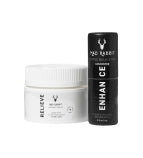
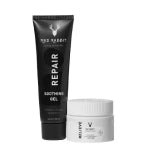
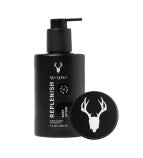
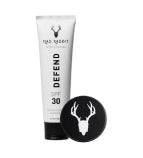
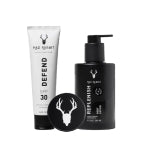

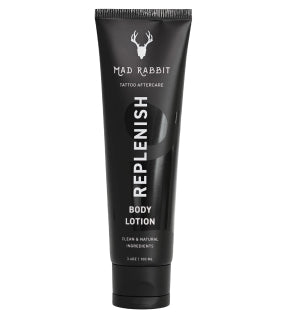
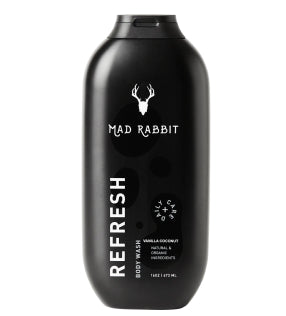
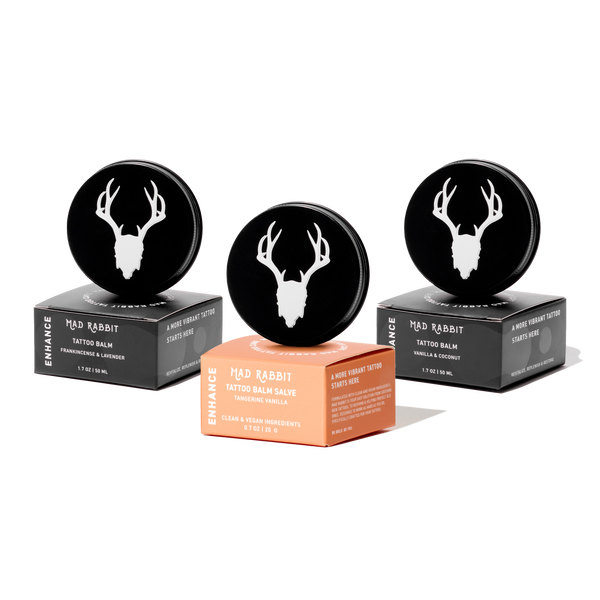

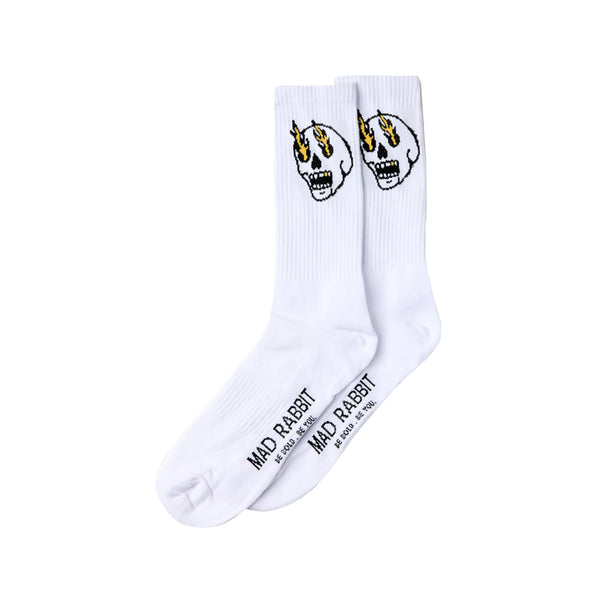

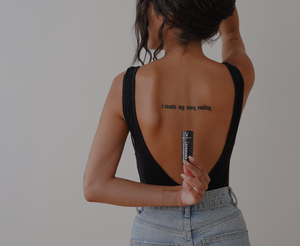
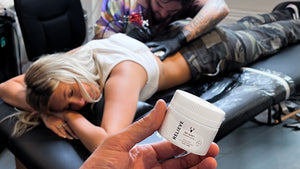
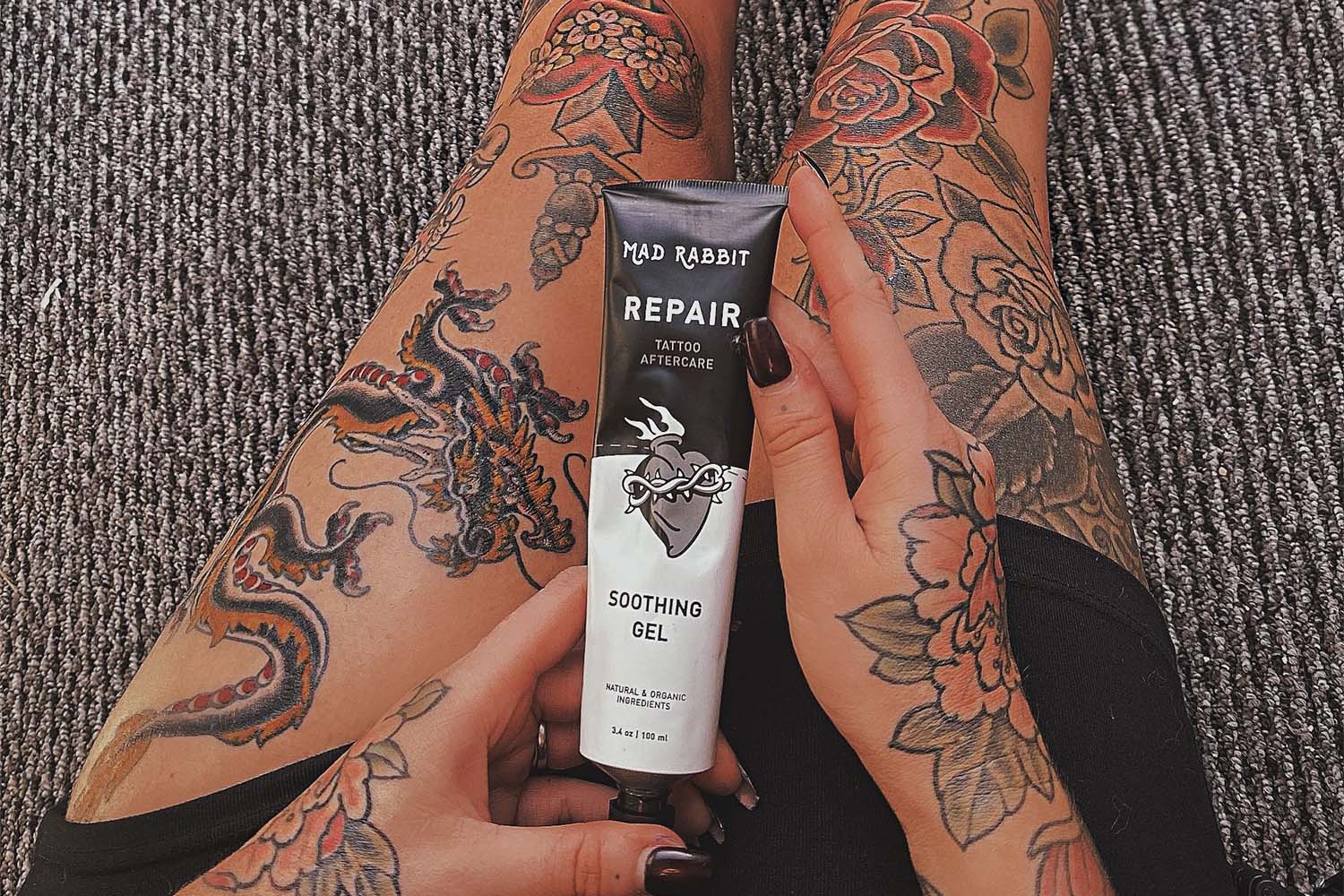
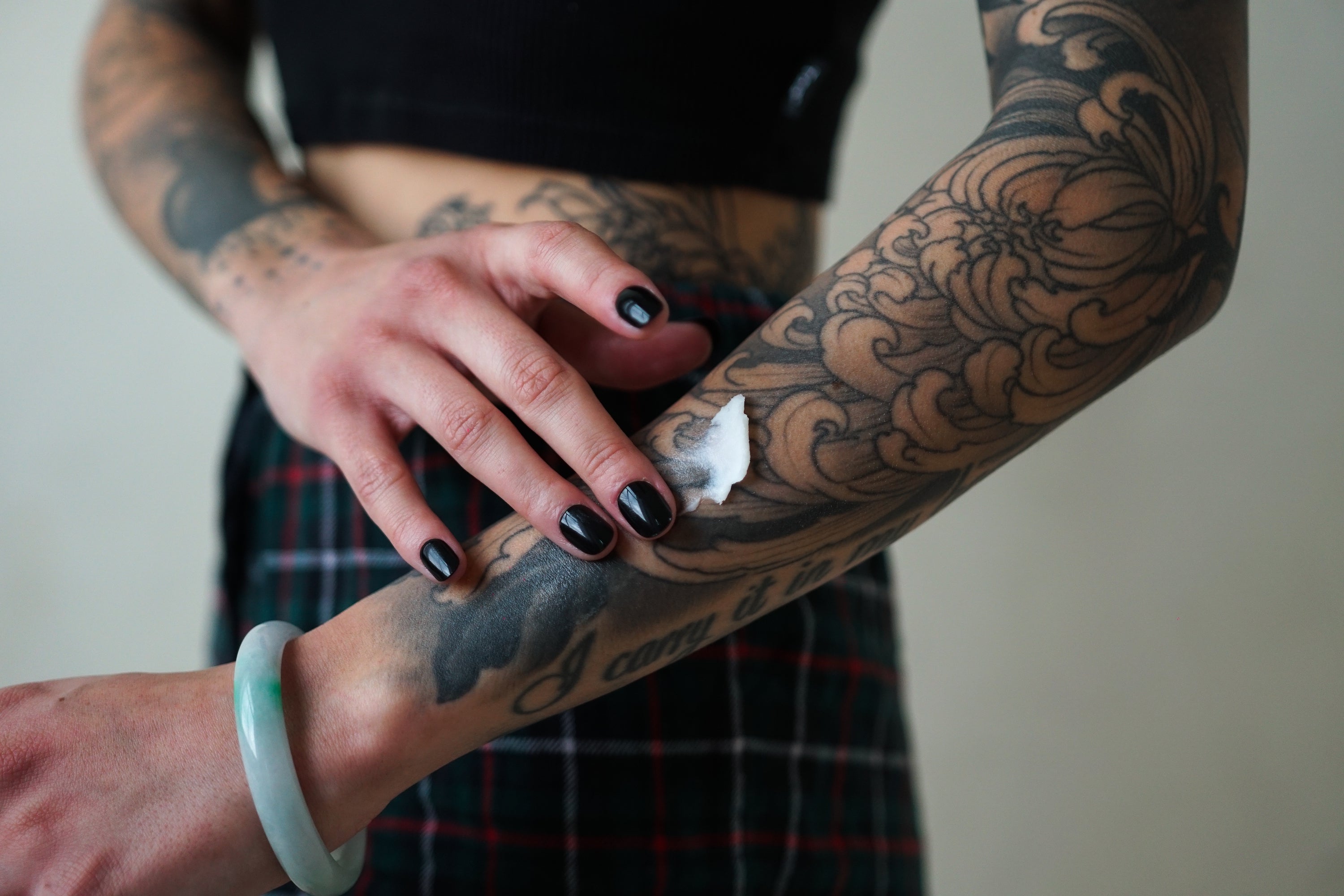
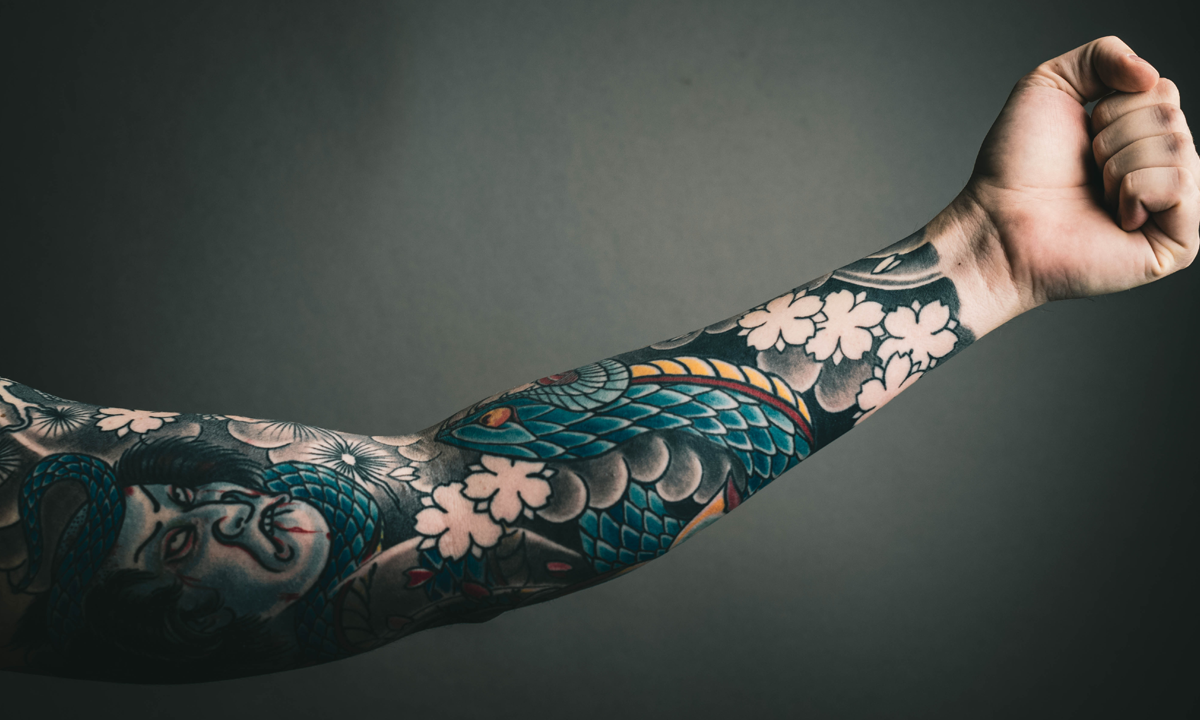
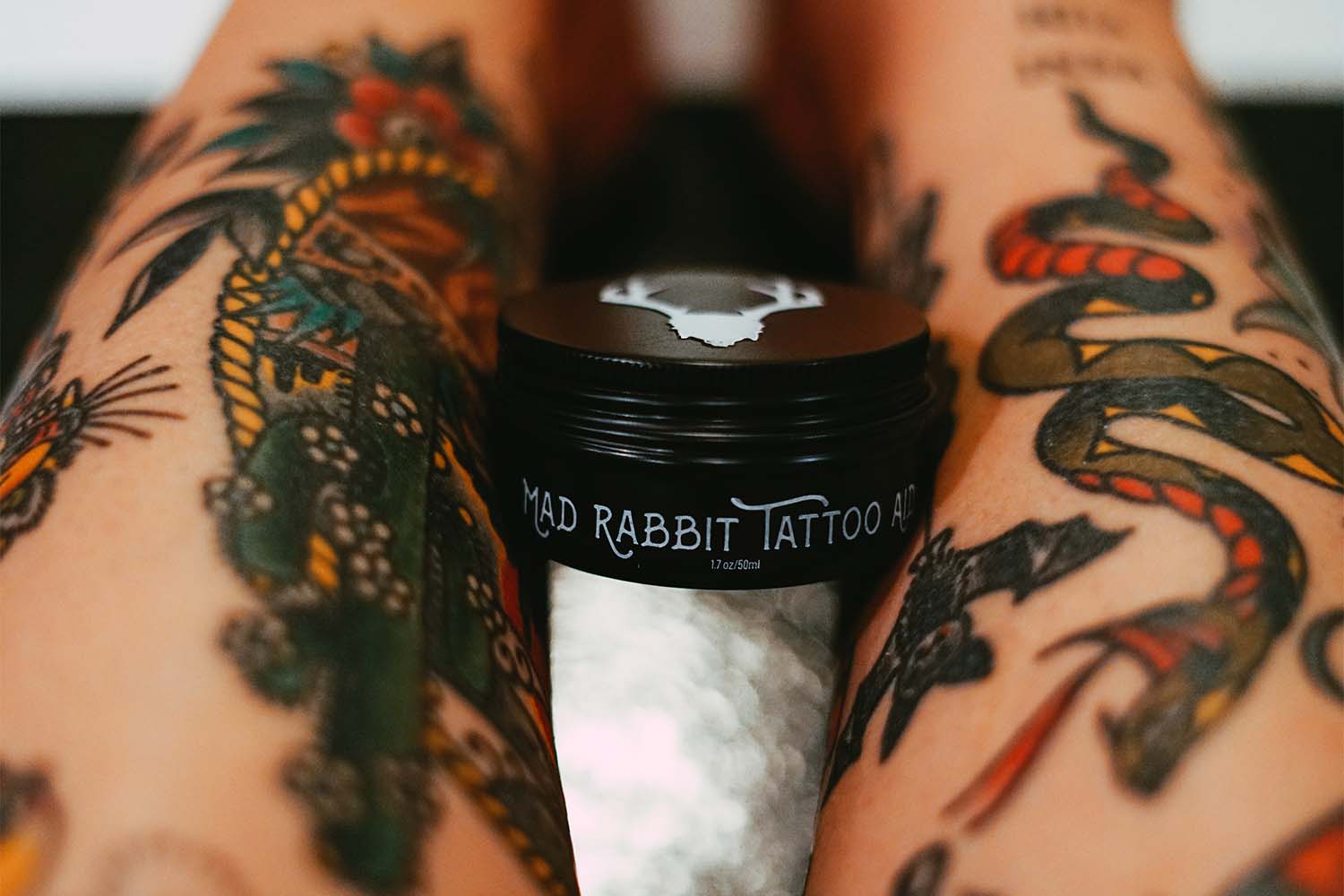
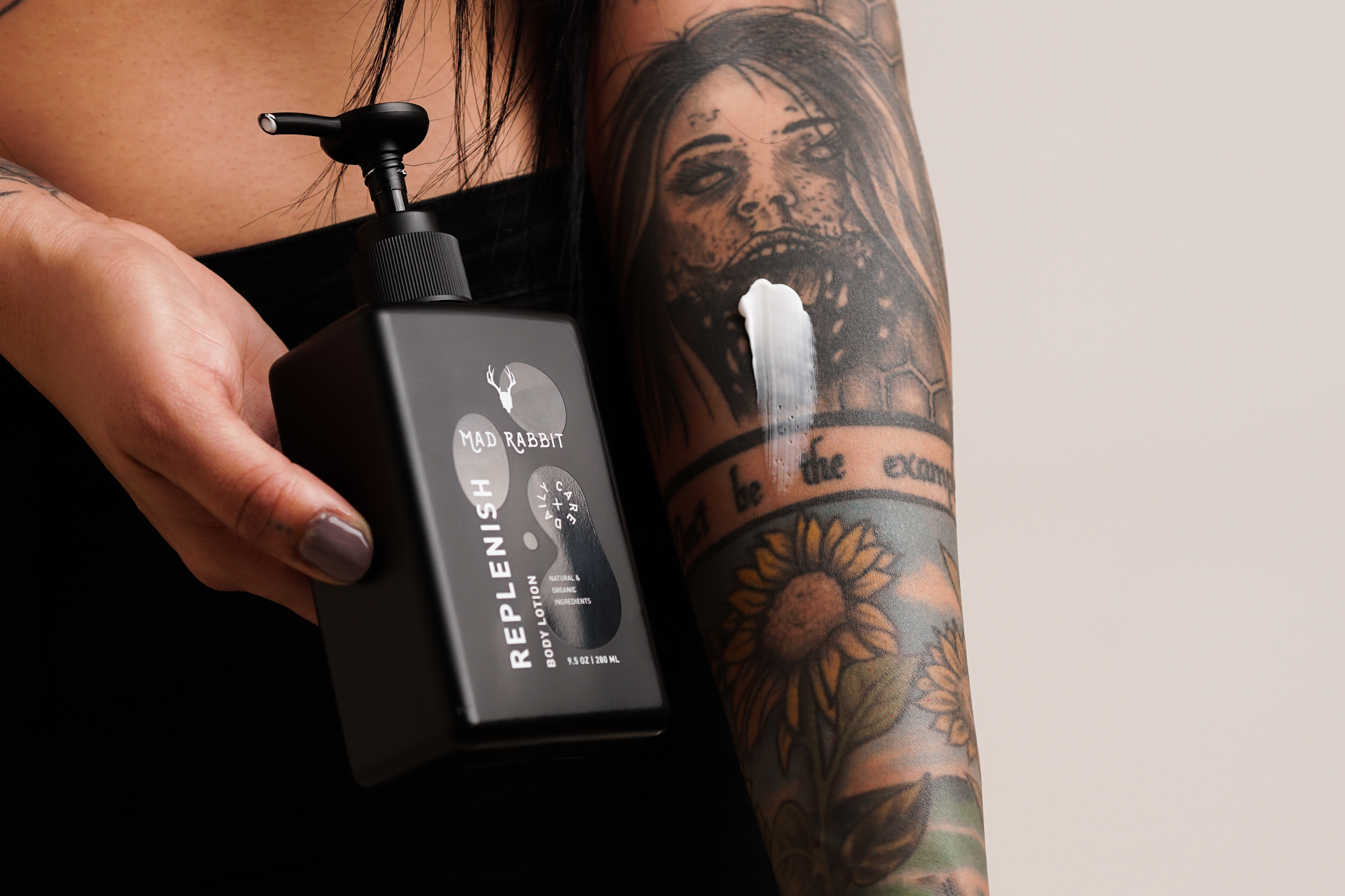
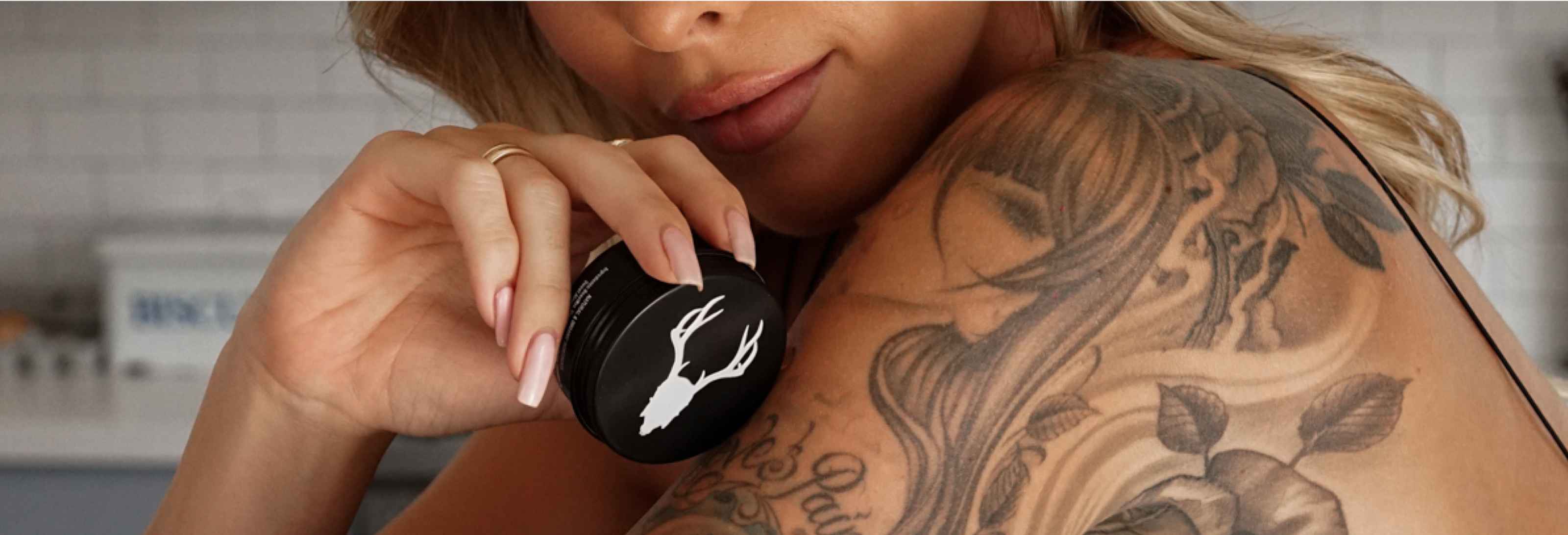
Join the discussion